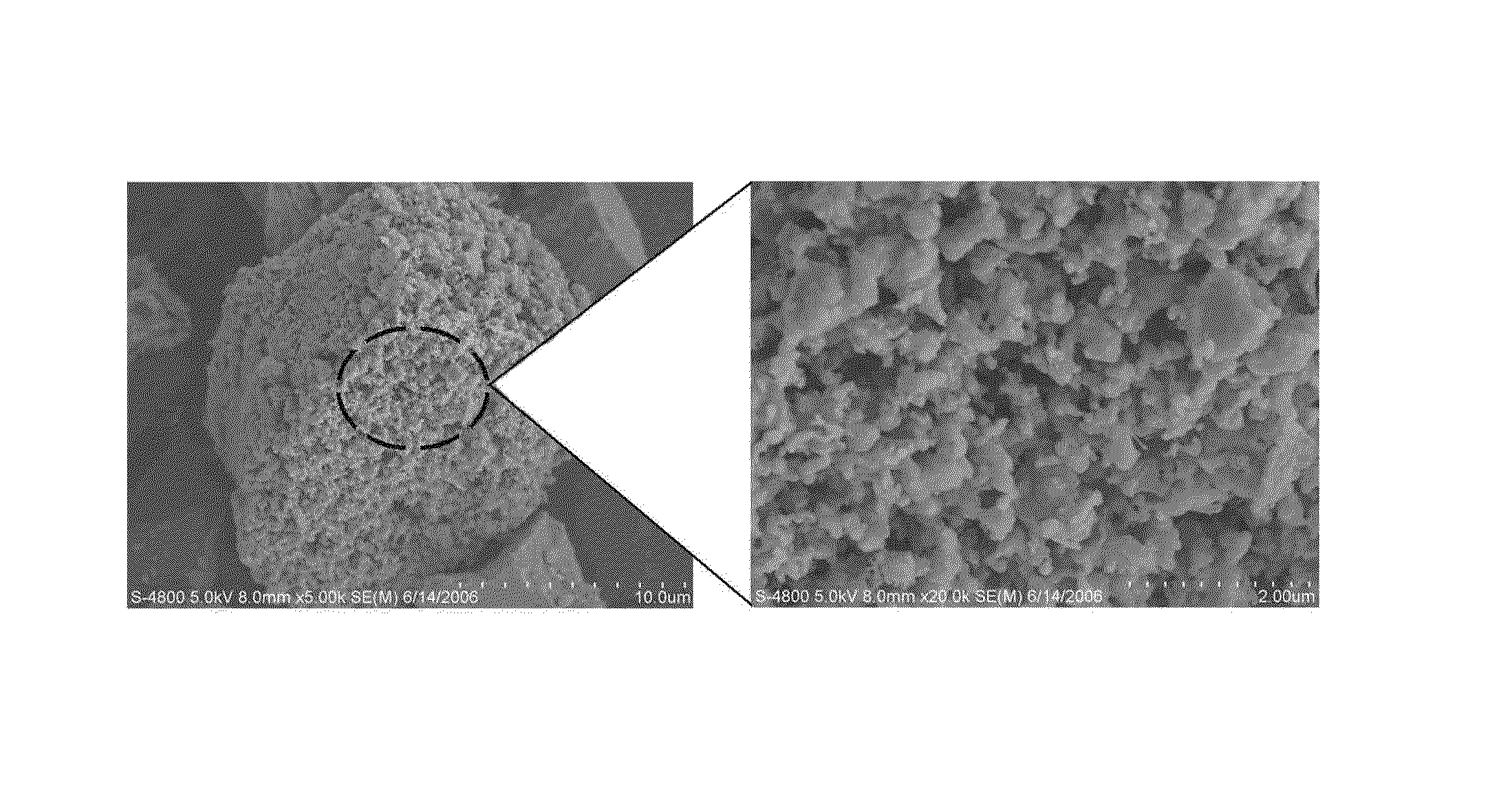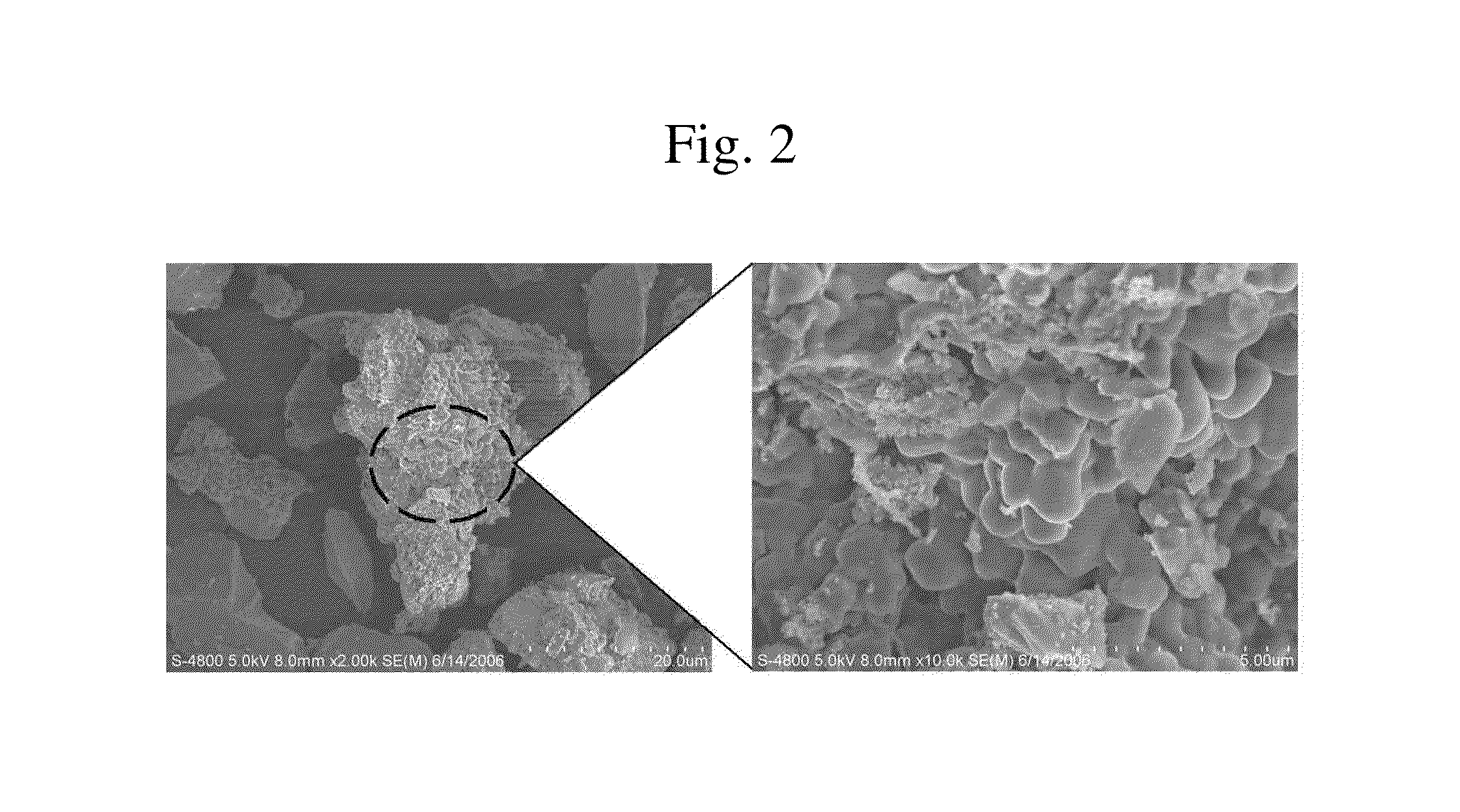Electrode active material for secondary battery and method for preparing the same
a secondary battery and active material technology, applied in the field of electrode active materials for secondary batteries and secondary batteries, can solve the problems of reducing the lifetime the tendency of metal electrode active materials to crack or pulverize, and the rapid decline of the capacity of the secondary battery using these metallic electrode active materials, so as to achieve the effect of minimizing the dead volume on the side of the cathod
- Summary
- Abstract
- Description
- Claims
- Application Information
AI Technical Summary
Benefits of technology
Problems solved by technology
Method used
Image
Examples
example 1
[0080]After dissolving 50 parts by weight of lithium chloride (LiCl) in ethanol, 50 parts by weight of silicon monoxide (SiO) was uniformly dispersed to prepare a dispersion. The resulting dispersion was heated to 70° C. to remove the solvent from the mixture. The resulting mixture was heat treated at 800° C. under a nitrogen atmosphere to prepare an electrode active material. FIG. 1 is a scanning electron microscopy (SEM) image of the prepared electrode active material.
[0081]Thus prepared electrode active material powder was mixed with polyvinylidene fluoride (PVDF) as a binder and Acetylene Black as a conductivity enhancer at a weight ratio of 85:10:5. Then, after adding N-methyl-2-pyrrolidone (NMP) as a solvent, the mixture was mixed to prepare a homogeneous electrode slurry. The prepared electrode slurry was coated on one side of a copper (Cu) current collector to a thickness of 65 μm. After drying, pressing and punching to a desired size, an electrode was prepared.
[0082]Ethylen...
example 2
[0084]An electrode active material and a battery were prepared in the same manner as in Example 1, except for using 80 parts by weight of lithium chloride and 20 parts by weight of silicon monoxide instead of 50 parts by weight of lithium chloride and 50 parts by weight of silicon monoxide.
example 3
[0085]An electrode active material and a battery were prepared in the same manner as in Example 1, except for using 76 parts by weight lithium iodide (LiI) as an oxygen-free lithium salt instead of 50 parts by weight of lithium chloride.
PUM
| Property | Measurement | Unit |
|---|---|---|
| diameter | aaaaa | aaaaa |
| particle size | aaaaa | aaaaa |
| diameter | aaaaa | aaaaa |
Abstract
Description
Claims
Application Information
 Login to View More
Login to View More - R&D
- Intellectual Property
- Life Sciences
- Materials
- Tech Scout
- Unparalleled Data Quality
- Higher Quality Content
- 60% Fewer Hallucinations
Browse by: Latest US Patents, China's latest patents, Technical Efficacy Thesaurus, Application Domain, Technology Topic, Popular Technical Reports.
© 2025 PatSnap. All rights reserved.Legal|Privacy policy|Modern Slavery Act Transparency Statement|Sitemap|About US| Contact US: help@patsnap.com



